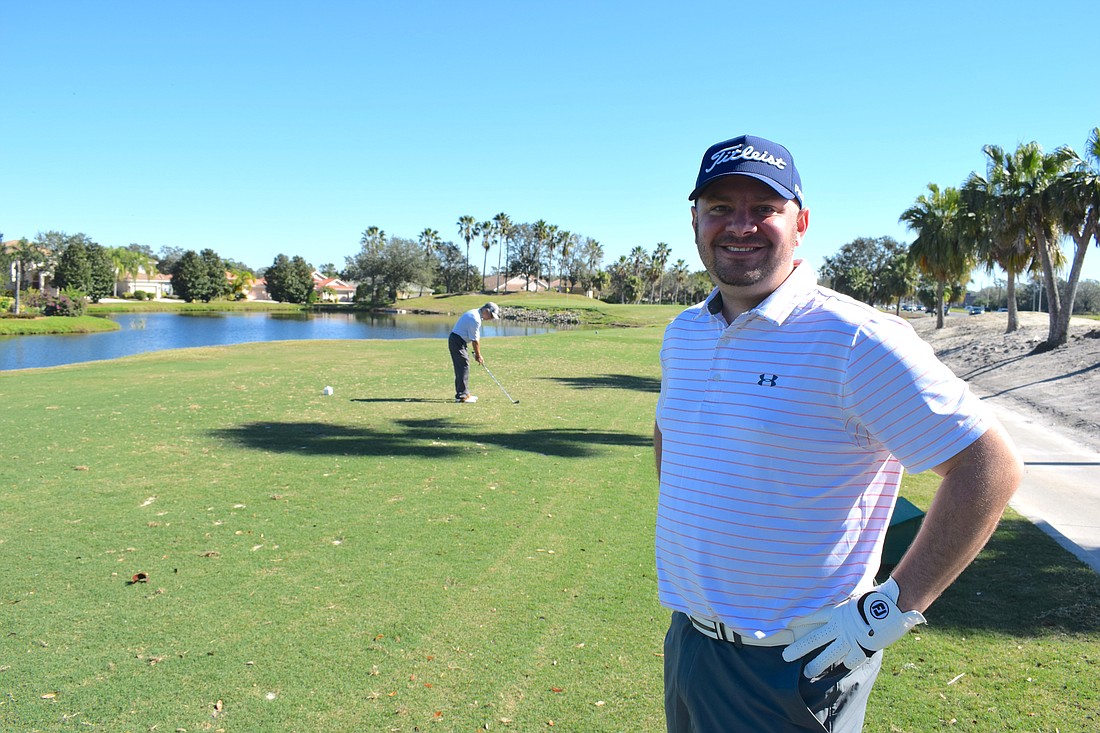- May 13, 2025
-
-
Loading

Loading

His name is right there on the Heritage Harbour Golf Course scorecard.
It says, "2022 Renovation: Nick Campanelli Architect."
"It was a proud moment for me professionally," Campanelli said Jan. 7 as he finished playing his first round over the course he redesigned.
The course originally was designed by noted golf course architect Arthur Hills in 2001. Hills, who died in 2012, designed more than 200 courses in the U.S.
Out of Glastonbury, Connecticut, Campanelli did the heavy lifting of the redesign before May when construction began and he hadn't had the opportunity to play the finished product.
As it begins its transition into Heritage Harbour Golf Resort, the club held a "Meet and Greet with the Architect" day on Jan. 7.
Campanelli's story is about making the best out of an unexpected opportunity. Working at Michael D'Angelo Landscape Architecture of Glastonbury, he had designed individual holes on golf courses and had done partial designs, but never had redesigned an entire 18-hole course.
His first full 18-hole endeavor wouldn't have happened, either, except for a chance meeting that didn't even involve him. His father, Tony Campanelli, was vacationing in the area in 2019 when he was eating at the Heritage Harbour clubhouse.
There he met Heritage Harbour Golf Club Managing Partner Mark Bruce, who was telling him about the future plans for the course. Tony Campanelli let loose his fatherly pride and told Bruce all about his son.
Considering Hills was such a big name in golf course design, it might have been a gamble for Bruce and the other partners to take a chance on Nick Campanelli.
"I felt really good about Nick," Bruce said. "I could tell he knew what he was doing and that he understood he was designing for every level of player."
Bruce gave Campanelli a test. He told him how the old No. 11 hole had to be redesigned into two holes. Campanelli did the work and sent Bruce his suggestions.
"He understands contouring and depth perception," Bruce said. "He understood our strategy, and that he had to maintain the integrity of the course."
One other trait stood out for Bruce.
"To do this, you've got to hear us," Bruce said. "I know what I want."
Campanelli got the job.
Heritage Harbour Partner Bryan Veith said it was a joy being able to make some suggestions about the redesign.
Veith, the owner of Veith Engineering and Business Solutions, thought he had some good ideas that would help the course over the long run.
"We played the old course with (Campanelli)," Veith said. "I always dreamed of being part of a golf course design. And we had some issues with erosion and a few holes where the greens were too far from the cart paths.
"I look at it from three perspectives, as a golfer, as an engineer and as an owner. It wasn't just about maintenance costs. We thought about how we could conserve water, and use less fertilizer. What would be best for our bottom line?"
Veith said Campanelli's design includes 40 acres of crushed shell, which gives definition to the course but also reduces the need for watering and also will require less maintenance in the long run.
"This is not going to wear like the old course," he said.
Veith even was able to convince Campanelli and the other partners to add a back tee area on the No. 8 par 3 hole in a spot that used to be some trees and brush. The hole wraps around a lake to the left and while the other tee areas don't require a shot directly over the lake, the new back tee will.
"I used to drive by here and say, 'Do we own this (land)?' I want a tee here."
Like Bruce, Veith wanted a course that was fun and playable for high handicap golfers and yet challenging for scratch golfers.
Campanelli digested all the input and went to work.
"The Florida challenge is how do you make something flat to be interesting?" Campanelli said. "Everything is so spread out here, so we worked hard moving earth.
"We had the bones, and the master plan was in."
Campanelli said he didn't consider the budget when he began designing.
"You have these big ideas," he said. "And then you get the budget.
"I am very happy with what I saw (after playing the course). We talked about doing a few more things long term."
Bruce said most of what Campanelli designed was attainable, but budget concerns did limit what they could do overall.
"We accomplished about 90% of our objectives," Bruce said. "The last 10%, forgive me, is what makes it our Augusta National. But we've got 90% of the heavy lifting done."
Scott McBroom’s Westscapes Golf Course Construction of St. Petersburg handled the construction on the course.
Campanelli said it played like he wanted in the design.
There are shots where the wrong play is aiming at the flag, and he said golfers will need several rounds to learn the greens. He said about a third of the shell bunkers he designed for the course have been completed, so the look will become even more interesting as time passes and those other shell bunkers are added.
He likes the risk-reward on many of the holes while he was pleased with the "collection areas" around the greens where the recreational golfer will have choices to attempt to get up and down for par.
Before the renovation, many of the areas around the greens had severe slopes that didn't give high-handicap golfers any chance of getting up and down.
"We made the course much more playable for the average golfer," he said. "It is a resort course, so we wanted to make it fun to play."